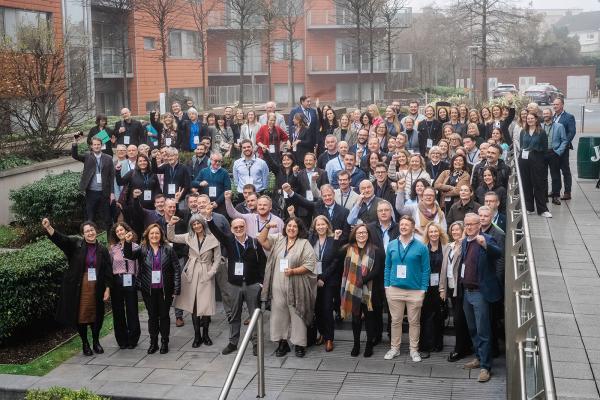
Instilling New European Bauhaus principles for THRIVE applicants in Ireland!
Those in attendance at the event included staff from 26 of Ireland's 31 local authorities. Among these were conservation and heritage officers, architects, and Town Regeneration Officers. Also attending were staff from the three Regional Assemblies: the two Managing Authorities (MAs) of the THRIVE scheme: the Southern Regional Assembly (SRA) & Northern and Western Regional Assembly (NWRA), alongside the Eastern and Midland Regional Assembly (EMRA) who helped coordinate the Assemblies' input into the event as Contact Point for the EUI in Ireland.
As well as the above, seven staff from the European Commission joined the event, including from DG REGIO, the Geographical Desk for Ireland and the NEB Unit within the Joint Research Centre. Additional national stakeholders from Ireland were present too, including from national government, from Town Centre First, and from academia. A range of national and European case studies of NEB good practice were represented and these were the cornerstone of activities during both days (more below).
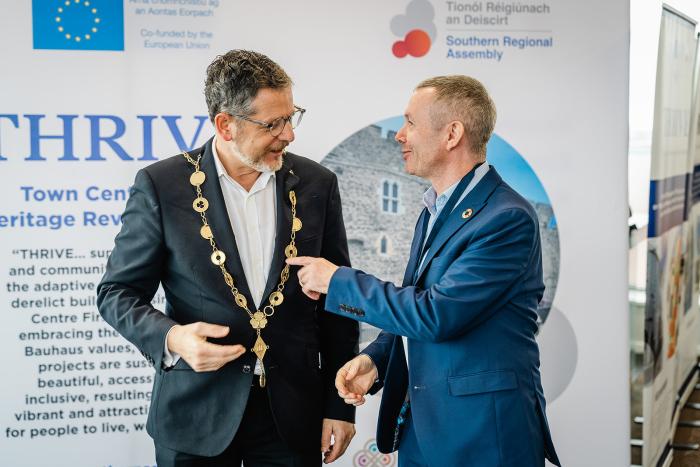
Mayor John Moran and Director of the Southern Regional Assembly David Kelly
Day one saw the event opened with messages from the new directly elected Mayor of Limerick, John Moran, from David Kelly, Director of the Southern Regional Assembly (both pictured above), as well as Tatiana Coelho De Oliveira of DG REGIO and Eilish O'Loughlin, Head of Capacity Building at the EUI Secretariat. Following some practical information by the Lead Expert Eleni Feleki, there was a panel of guests to debate whether the NEB (New European Bauhaus) is a buzzword or a breakthrough. This was followed by an inspirational keynote by Natasa Christou, Director of the Gardens of the Future in Nicosia. Following the lunch break, attendees explored the urban practices marketplace over a coffee. This was an exhibition of national and European examples of good practice in engaging and incorporating NEB principles. You too can view these exhibition posters under "material and resources" (there you can also find a link to all the photos for the day, as well as slides and other items). After lunch we heard from Lorenzo De Simone from the European Commission's Joint Research Centre on the Guiding Framework for the NEB in applying its values and principles: a compass and the European Investment Bank's Small Projects Check List. Next, the attendees were broken into groups for a hands-on exercise (in parallel) to apply the tools to the national case studies of Nano Nagle Place (Cork), Rediscovery Centre (Dublin), Castleblayney-Library and Market Square Regeneration (Monaghan) and the Medieval Mile Museum (Kilkenny). Following a brief coffee break, a walking visit of key sites around Limerick City was undertaken, including Limerick Twenty Thirty DAC's Cleeves Riverside Quarter, Gardens International and the Opera Square sites, as well as Mary's Cathedral, Nicholas Street and King John's Castle and King's Island Walled Town.
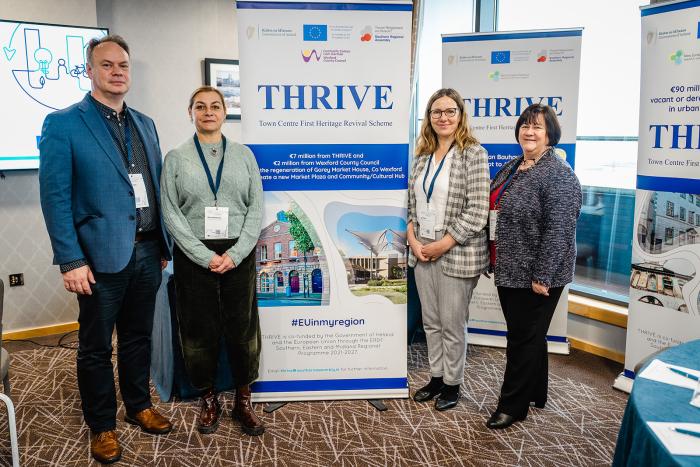
Philip Knight & Liz Hore (Wexford CoCo) alongside Elena Panteva (European Commission) and Rose Power (SRA)
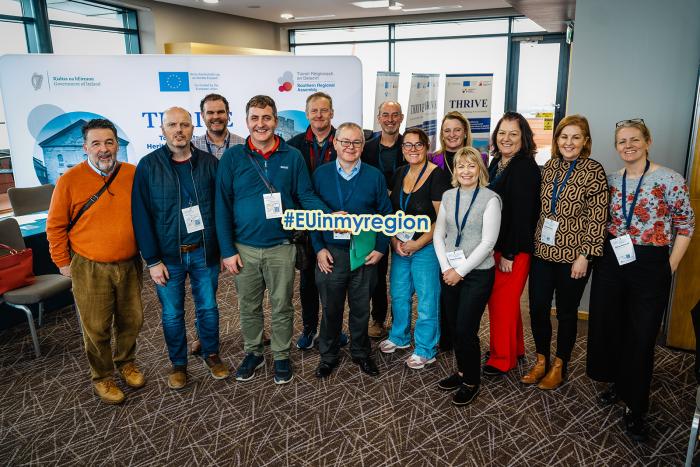
Yvette Keating (third from R) from the NWRA alongside event participants from the region
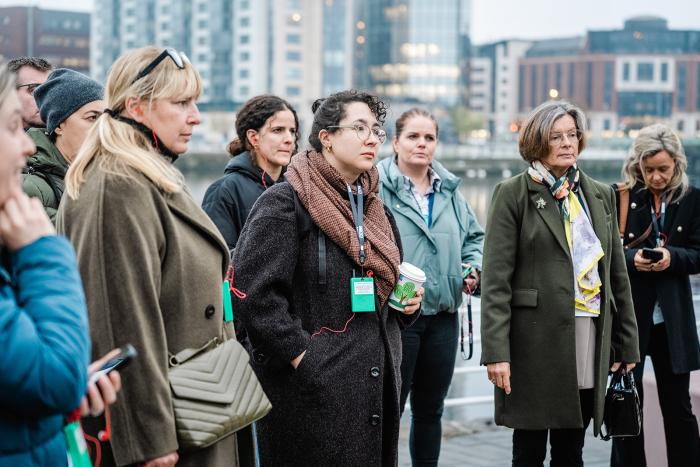
Participants on site visits around Limerick City Centre
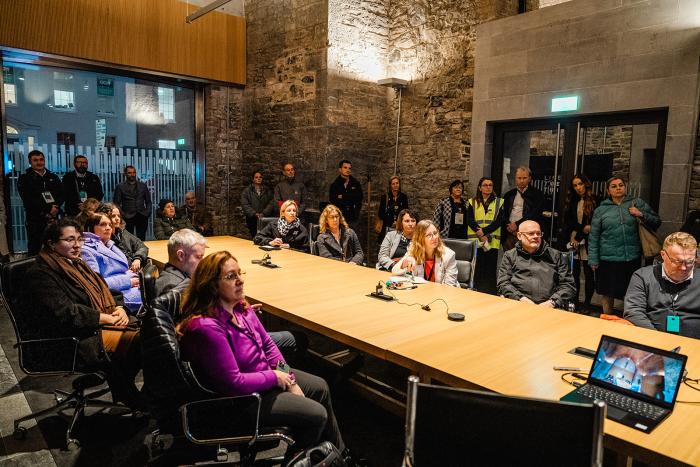
Participants on a site visit to the Garden International development in Limerick City
Day two began with a pre-recorded message from MEP Marcos Ros, a key advocate for the New European Bauhaus. This was followed by another panel, involving some of our European case study guests, on the challenges to design of NEB Projects and Solutions. Cristina Garzillo of the International Council for Local Environmental Initiatives (ICLEI) spoke about how the NEB Toolbox could be used to address the challenges identified by the panel. Following a brief coffee break, another set of parallel hands-on exercises occurred, applying these to the design, implementation and monitoring of NEB-aligned projects. Like day one, there were four case studies, but instead of being national ones, Valletta Design Cluster (Malta), ROD-Creative and Learning Space, Piatra Neamt (Romania), Fábrica Santo Thyrso (Portugal) and Dobele's Castle Reconstruction (Latvia) were the focus.
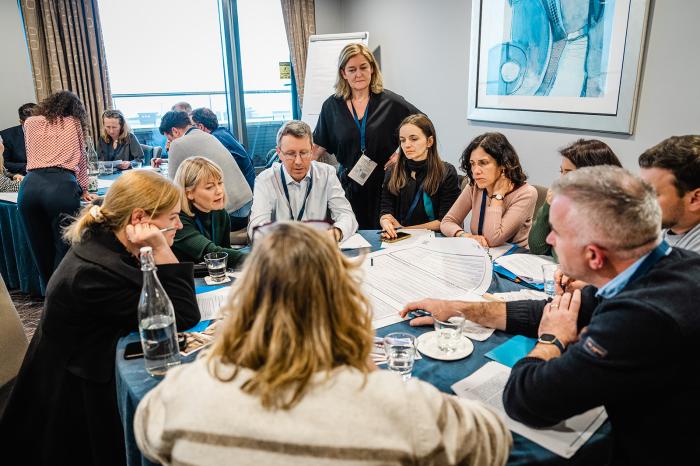
Group work applying practical tools to national case study examples of the NEB
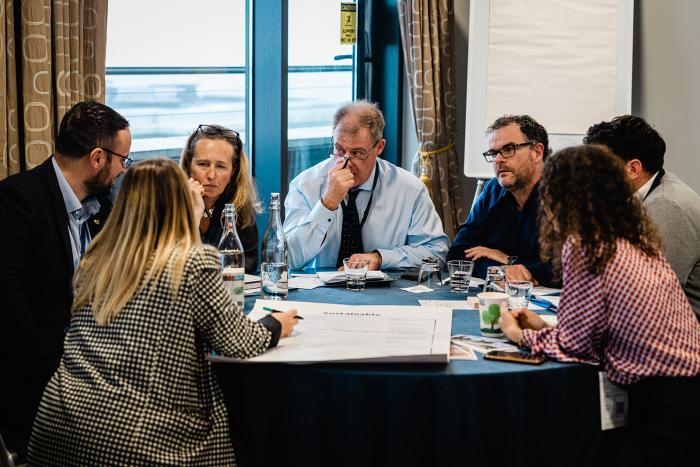
Group work applying practical tools to national and European case study examples of the NEB
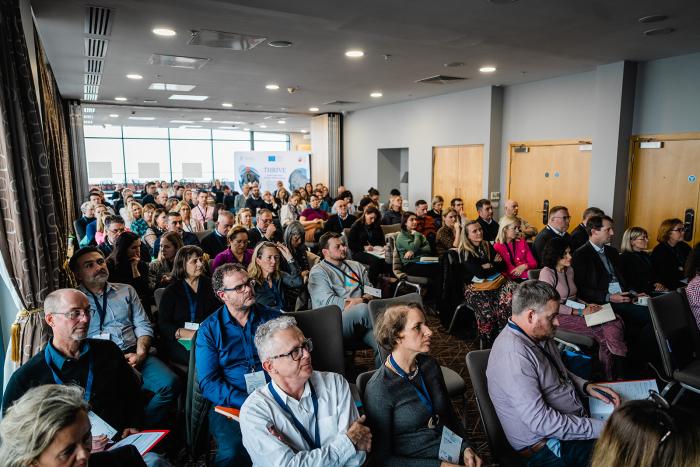
Local authority staff in attendance at the event
In conclusion, there were a few reflections in plenary, including from key listeners during the event. Rose Power of the Southern Regional Assembly spoke of applying NEB beyond THRIVE, reaffirming both the short and medium-term support this event will have given to THRIVE applicants but with the hope of a longer-term impact on attendees and a more natural inclusion and embedding of NEB principles and values into the future. Eleonora Giorgi of the EUI Permanent Secretariat concluded by giving an overview of all upcoming EUI opportunities.
A special word of thanks must go to those involved from the EUI Capacity Building team, Eleonora and Paul, their heads of Unit Eilish and Raluca, as well as the appointed experts Eleni Feleki and Eileen Crowley who so ably designed a great curriculum. It was great to be joined by three further EUI experts who helped moderate some of the above sessions. These were Ed Adams, Liat Rogel, and Matthew Baqueriza-Jackson. Warm thanks must also go to Maria Woods, Senior Planner at Limerick City and County Council for the work she and her team put into designing the site visits for us and guiding us along the way. Also, finally, a special thanks to our colleagues at the event management company Arctik and our hosts at the Strand Hotel, Limerick!
